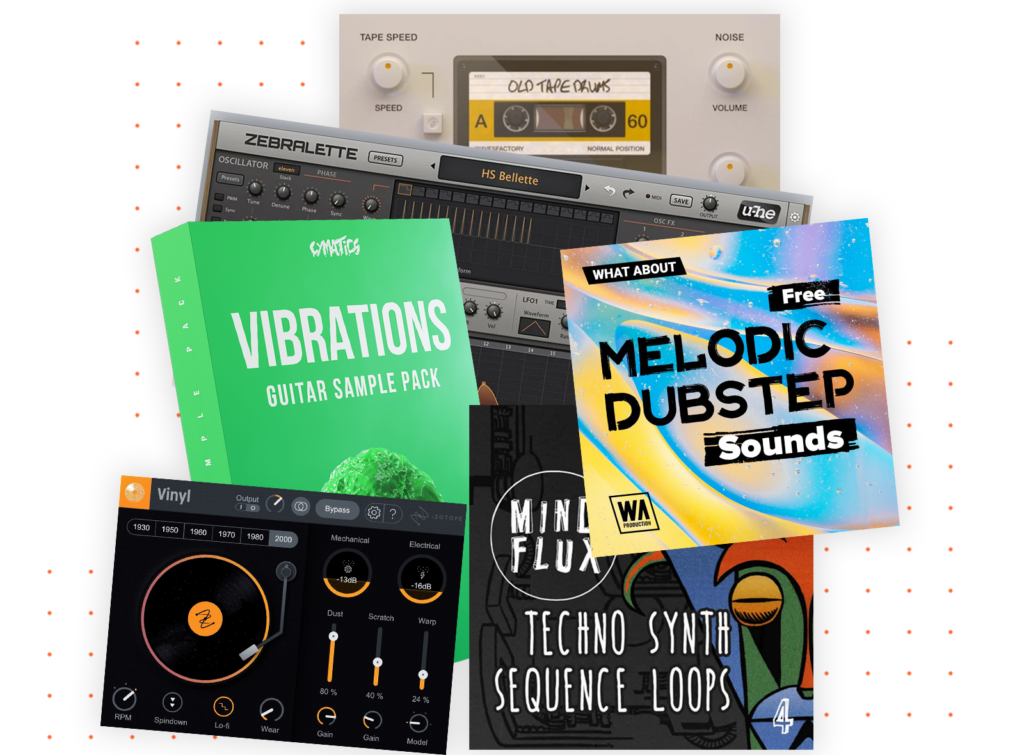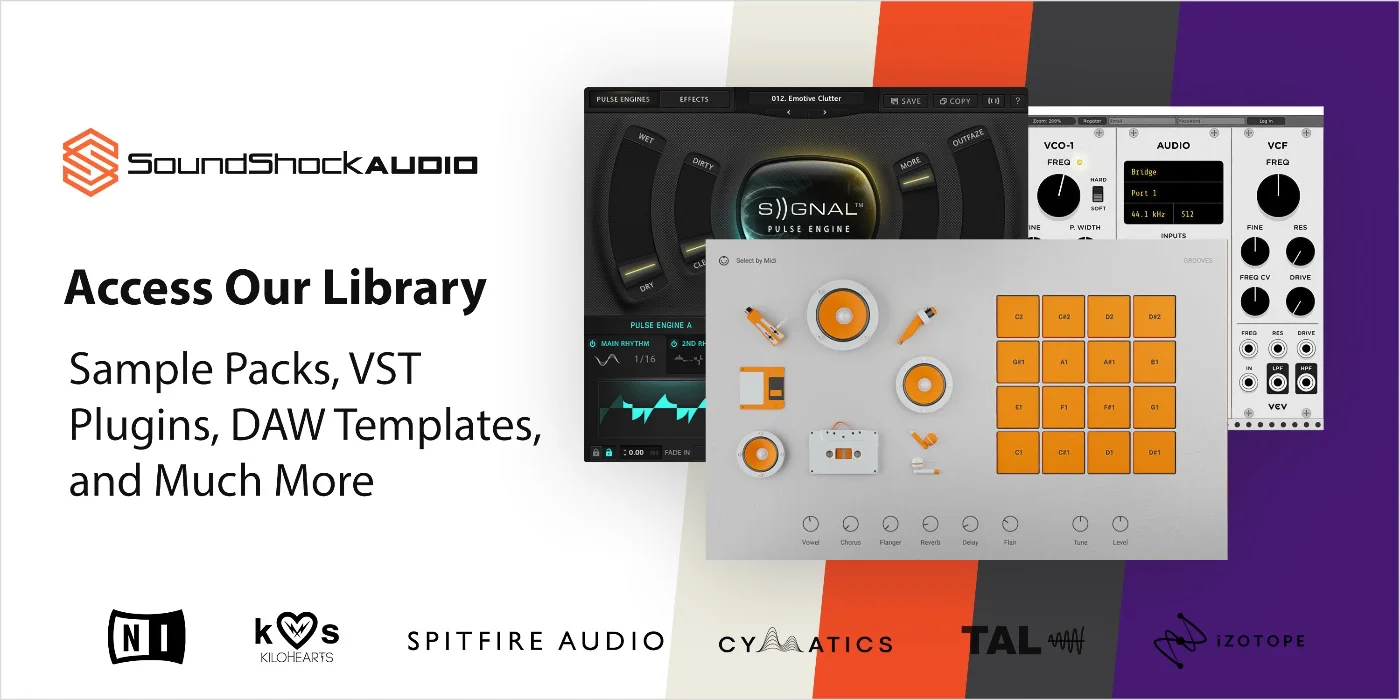EQing pop vocals comes with its own set of challenges and goals.
The vocals often need to cut through dense instrumentation while maintaining a polished, radio-friendly sound.
In this article, we’ll show you exactly how to EQ Pop vocals so your tracks can compete with professional tracks.
Understanding Vocal Frequencies

To effectively EQ pop vocals, it’s essential to understand the frequency spectrum relevant to human vocals.
The human voice typically spans from around 80 Hz to 12 kHz, with different frequency ranges contributing to various aspects of the vocal sound.
- Low frequencies (80-250 Hz) provide warmth and body.
- Lower midrange (250-500 Hz) can introduce muddiness or boxiness.
- Midrange (500 Hz-2 kHz) contains the fundamental frequencies of most vocals.
- Upper midrange (2-4 kHz) is crucial for vocal presence and clarity.
- High frequencies (4-12 kHz) contribute to air, brilliance, and articulation.
Essential EQ Techniques for Pop Vocals
High-Pass Filtering
High-pass filtering involves removing low frequencies that are not essential to the vocal performance. This helps to clean up the mix, reduce rumble, and make space for other instruments in the low-end. A typical starting point is to set the high-pass filter around 80-100 Hz and adjust according to the characteristics of the vocal.
De-Essing
Sibilance, the harsh “s” and “t” sounds, can be problematic in pop vocals. De-essing techniques are used to tame these frequencies, typically found in the 5-10 kHz range.
This can be done using a dedicated de-esser plugin or by surgically attenuating the offending frequencies with a narrow EQ band.
Attenuating Problematic Midrange
The midrange is where vocals can often sound muddy, boxy, or nasal.
Identifying and attenuating problematic frequencies in the 250-500 Hz range can help to alleviate these issues. It’s important to make these cuts in moderation to avoid thinning out the vocal too much.
Boosting for Clarity and Presence
To make the vocal stand out in the mix, boosting frequencies in the upper midrange (2-4 kHz) can enhance clarity and presence.
This is often done with a wide Q setting to gently lift the vocal without introducing harshness. The exact frequency and amount of boost will depend on the specific vocal and the desired effect.
Advanced EQ Settings For Pop Vocals
Dynamic EQ and Multiband Compression
Dynamic EQ and multiband compression allow for more precise control over frequency-specific issues. These tools can adapt to the changing dynamics of a vocal performance, applying processing only when certain frequency thresholds are exceeded.
This is particularly useful for taming sibilance or controlling harsh resonances that occur only on certain notes or phrases.
Surgical EQ Techniques
Surgical EQ involves making very narrow, precise adjustments to target specific problems.
This can be useful for removing nasal tones, reducing harsh overtones, or attenuating specific resonances. It requires a careful ear and a light touch to avoid over-processing the vocal.
EQing for Different Vocal Types

Male vs. Female Vocals
Male and female vocals have different fundamental frequency ranges, which affects how they are EQed.
Male vocals typically have more energy in the lower midrange, while female vocals have more presence in the upper midrange and high frequencies.
EQ adjustments should take these natural differences into account.
Different Vocal Styles
Pop music encompasses a wide range of vocal styles, from powerful belting to soft, intimate delivery. EQing should be adapted to suit the specific style:
- Belting vocals may require more high-mid boost for cut-through.
- Softer vocals may benefit from a gentler high-frequency lift for air and intimacy.
- Raspy or gritty vocals may need more low-mid attenuation to avoid muddiness.
Common EQ Mistakes to Avoid
Over-EQing
It’s tempting to make drastic EQ moves to shape the perfect vocal sound, but over-EQing can lead to unnatural results. It’s important to make adjustments in small increments and regularly reference the unprocessed vocal to maintain perspective.
Ignoring the Context
EQing a vocal in solo can be misleading. What sounds good in isolation may not work in the context of the full mix. It’s crucial to regularly check the vocal EQ within the mix, making sure it sits well with the other instruments and doesn’t clash or disappear.
Practical Examples and Case Studies
To illustrate the impact of different EQ techniques, let’s walk through a few examples:
- In “Shape of You” by Ed Sheeran, the lead vocal has a bright, airy quality. This is achieved with a high-pass filter around 100 Hz, a gentle boost around 3-4 kHz for presence, and a subtle high-frequency shelf boost for air.
- In “Rolling in the Deep” by Adele, the powerful lead vocal cuts through a dense mix. The EQ likely includes a high-pass filter around 80 Hz, a dip in the lower midrange to reduce muddiness, and a boost in the upper midrange (around 2-3 kHz) for clarity and projection.
Tools and Resources
For further learning, check out these resources:

Access 4,000+ Music Tools
Access our entire library of music tools including sample packs, VST plugins, DAW templates, and much more.
Frequently Asked Questions
How Much EQ Should I Apply to a Vocal?
The amount of EQ depends on the specific vocal and the desired effect. As a general rule, make small, incremental adjustments and avoid over-processing. A good starting point is to apply cuts or boosts of 3-6 dB and adjust from there.
Should I EQ Before or After Compression?
There’s no definitive answer, as the order of processing depends on the specific situation and desired outcome. In general, it’s common to apply some gentle EQ before compression to remove any problematic frequencies, and then apply more detailed EQ after compression to fine-tune the tonal balance.
How Do I Know Which Frequencies To Boost or Cut?
Identifying which frequencies to adjust comes with practice and experience. A good starting point is to use EQ presets as a reference and then adjust based on the specific characteristics of the vocal. It’s also helpful to train your ears by listening to how different frequency ranges sound in isolation and in the context of the mix.
Looking For The Best Music Production Tools?

Get access our vast library of over 4,000 tools to create professional-sounding music.
Still need help with EQing? Read our other EQ guides below.





hey there, got a question bout the dynamic EQ and multiband compression part. does it really make a huge dif using dynamic eq instead of a reg eq for vocals? still tryin to get my mixes to sound pro. thanks!
Yes, Dynamic EQ can make a world of difference by responding to the signal’s intensity, giving you a smoother and more natural sound, especially on vocals.
I’ve always found high-pass filtering to be a delicate process. Too much, and the vocal loses its natural warmth. Care to share some threshold settings, Daniel?
de-essing? more like de-stressing am i right lol. fixing sibilance is the bane of my existence, hurts my ears and my soul.
imo you gotta eq before compression, setting the stage right for dynamics. eq after just feels like fixing problems you could’ve avoided, ya know?
While I see your point, EQ after compression can help sculpt the tone further without affecting the dynamics. It’s all about the context of the mix.
Daniel, I must say, your segment on surgical EQ techniques is spot on. Identifying and cutting out those problematic frequencies can really clean up a mix. Do you have any tips for using spectral analyzers to identify those frequencies more effectively?
Absolutely loved the section on EQing for different vocal types. It’s crucial to approach each voice uniquely, and these tips are a great starting point. Thanks for sharing, Daniel!
so when it comes to male vs female vocals, how much does the eq setting really change? i get they’re different but is it like a completely different approach or just small tweaks?
yo, how do i know which frequencies to boost or cut? always find myself guessing and then messing up the mix even more.
Start by cutting frequencies that sound bad instead of boosting good ones. Boosting too much can make your mixes sound amateurish or muddy.